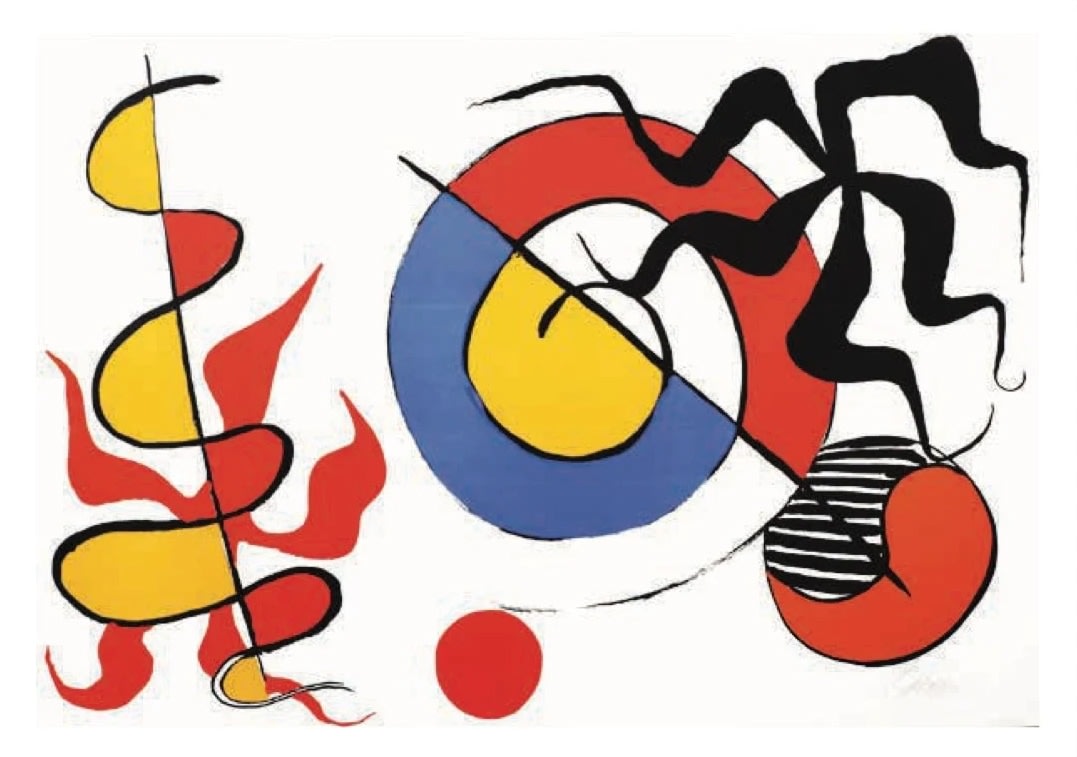-
Artworks
Alexander Calder
spirale et poulpe, 1975Lithograph in Colors29 3/8 x 43 1/4 in
74.6 x 109.9 cmHC (Edition of 75)Copyright The ArtistSculptor and kinetic artist Alexander Calder was born in 1898 in Philadelphia, Pennsylvania, the son of Alexander Stirling Calder and grandson of Alexander Milne Calder, both well known sculptors. He...Sculptor and kinetic artist Alexander Calder was born in 1898 in Philadelphia, Pennsylvania, the son of Alexander Stirling Calder and grandson of Alexander Milne Calder, both well known sculptors. He was encouraged to sculpt and construct things in his own workshop at an early age. In 1919 he graduated from Stevens Institute of Technology with a degree in mechanical engineering, and after holding several jobs, he decided to take classes at the Art Students League in New York City. During his student years he completed line drawings for the National Police Gazette. Calder began exhibiting his paintings at this time, but also focused on drawing, illustration, and wood and wire sculpture.
In June, 1926 Calder moved to Paris. He attended classes at the Academie de la Grande Chaumiere and he created his performance piece, Cirque Calder, a complex and unique body of art. The assemblage included diminutive performers, animals, and props fashioned from wire, leather, cloth, and other found materials. Cirque Calder was designed to be manipulated manually by Calder. Every piece was small enough to be packed into a large trunk, enabling the artist to carry it with him and hold performances anywhere. Its first performance was held in Paris for an audience of friends and peers, and soon Calder was presenting the circus in both Paris and New York to much success. Calder’s renderings of his circus often lasted about two hours and were quite elaborate. Indeed, the Cirque Calder predated performance art by forty years.
Calder befriended many influential artists, including Joan Miro, Fernand Leger, Marcel Duchamp, and Yves Tanguy. He was invited to join Abstraction-Création, an influential group of artists including Arp, Mondrian, and Hélion with whom he had become friendly.

